How to Play Taroky
New to Taroky?
Start here
New to MachTarok?
Learn the website
Want to Advance?
See the full rules
Go Back
Welcome to Taroky! (1)
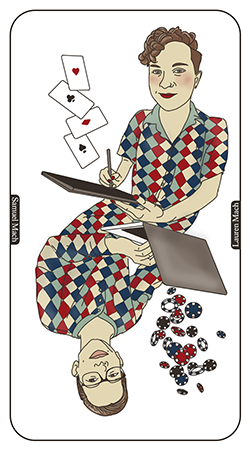
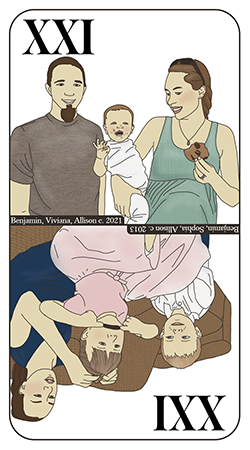
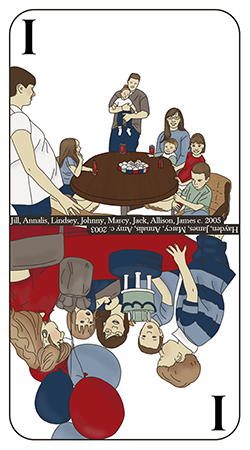
Trul, the most valuable Trump cards
Taroky is a turn-based point-trick game like Spades.
Ready to learn how to play? Click "Next" to get started!
Next
The Suits (2)


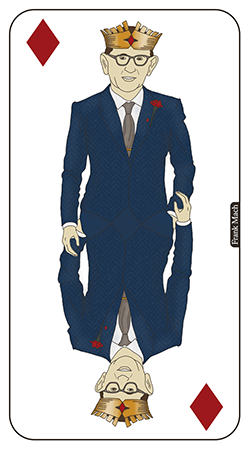
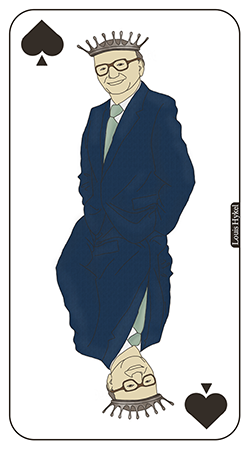
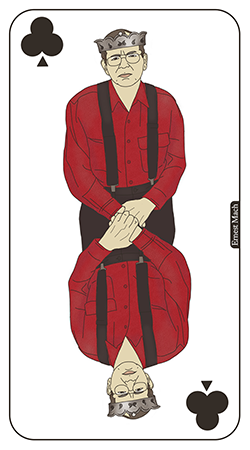
The highest card from each suit
Unlike in a standard 52 card deck, Taroky has 5 suits: Trumps, Hearts, Diamonds, Spades, and Clubs.
In total, there are 22 Trumps and 8 cards of each color, making the 54 card Taroky pack slightly larger than a standard deck.
Back
Next
The Trumps (3)


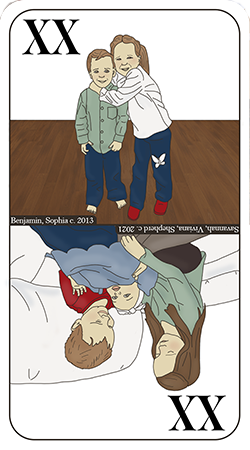

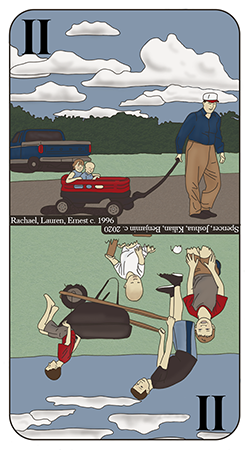

The 22 Trump cards range from Skyz down to the I
All Trump cards - besides the Skyz - have roman numerals to indicate their size.
The Trumps are important because, when played, the largest trump always captures the trick.
Most trumps are worth only 1 point, but the Skyz, XXI, and I are worth 5 points each.
Back
Next
The Red Suits (4)

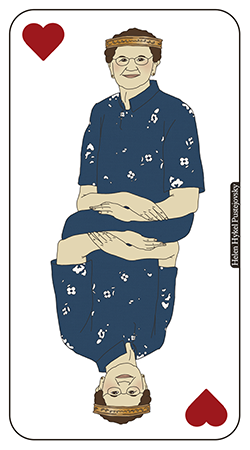
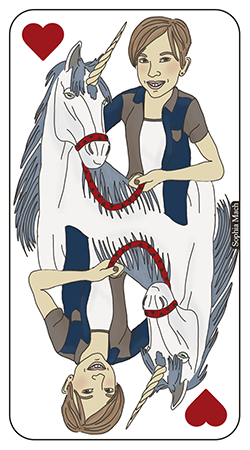

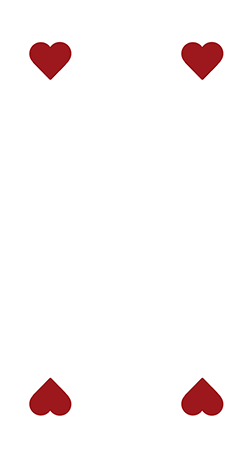
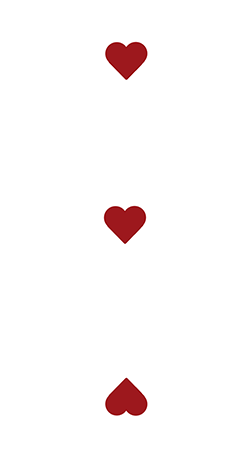
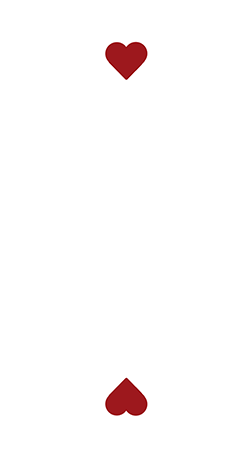
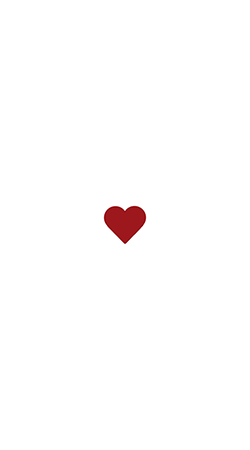
The 8 Hearts cards, arranged in order of precedence
Each color suit contains 8 cards: 4 court cards and 4 pip cards.
The 4 court cards are the 5-point King, 4-point Queen, 3-point Rider, and 2-point Jack.
Each of the pip cards are worth only 1 point.
Unlike the trumps, the color cards are not guaranteed a win even if the highest one is played. A trump will always beat any color.
The red suits - hearts and diamonds - have the pip cards 4, 3, 2, and Ace.
Back
Next
The Black Suits (5)

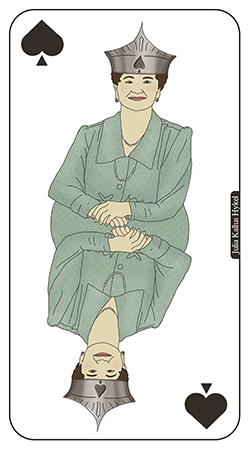
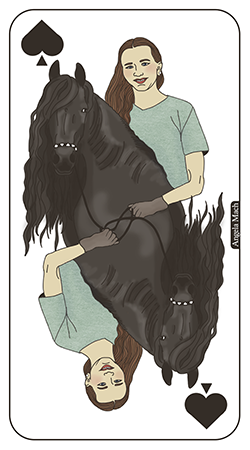
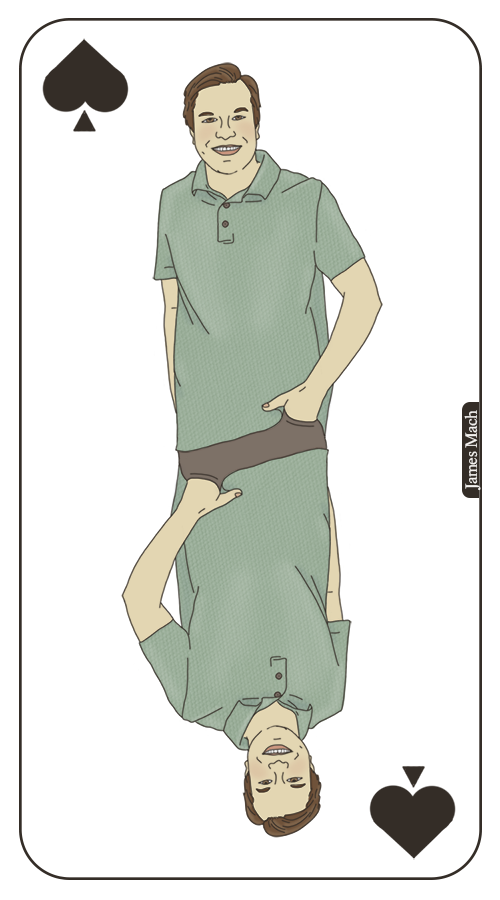
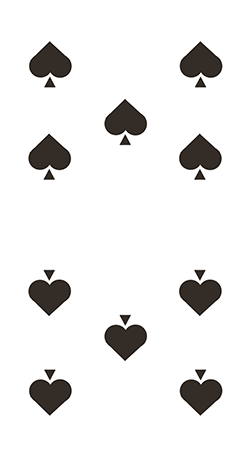
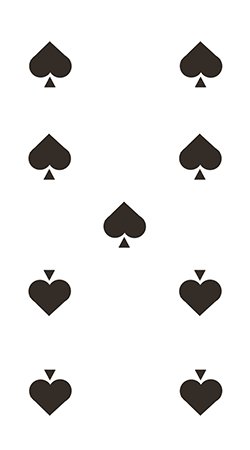
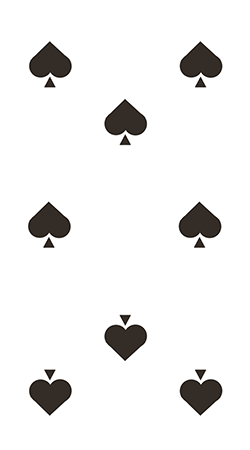

The 8 Spades cards, arranged in order of precedence
The black suits also have 8 cards, but the pip cards are the 10, 9, 8, and 7 instead of 4, 3, 2, and Ace.
Back
Next
Your First Turn (6)




It's a common choice to lead a king for the first trick
The first player, known as Povinnost, will lead the first trick.
Each player starts the game with 12 cards, and Povinnost may choose to lead any of the 12.
Back
Next
Following Suit (7)


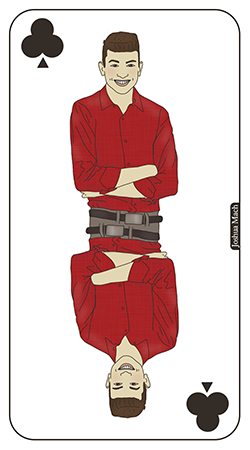
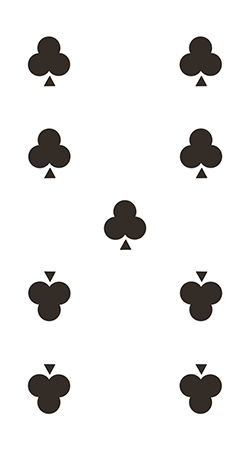
When a player leads a king and no other player trumps it, the king "walks"
After a player leads the trick, each other player must follow suit if possible.
If Povinnost leads the King of clubs, for example, and the next player has a club, then that player must play a club.
This is true for every suit, including Trumps.
Back
Next
Trumping (8)




If a player doesn't have a suit, then they are "void" in that suit and must instead play a trump
If it is not possible to follow suit, then a trump must instead be played.
Sometimes, after a suit is lead, a player will have neither that suit nor a trump, and must sluff another card.
If Povinnost leads the King of clubs, for example, and the next player has no clubs, then that player must play a trump instead.
This is true for every suit, including Trumps. If a player leads a trump and another player is out of trumps, then that player must sluff.
A card which is sluffed can never win the trick.
Back
Next
Winning the Trick (9)




The highest trump played always wins
Whichever player played the highest trump wins the trick.
The winner takes all four cards and places them into the discard pile.
Each card is worth points, which will count towards that player's team's total score.
Whoever won the trick now leads the next trick.
Back
Next
Winning the Trick Without Trump (10)




The highest card of the lead suit wins
If no trumps are played, the highest card of the lead suit wins.
A player who sluffs (plays an off-suit card that isn't a trump) can never win the trick.
Back
Next
Playing on a Team (11)


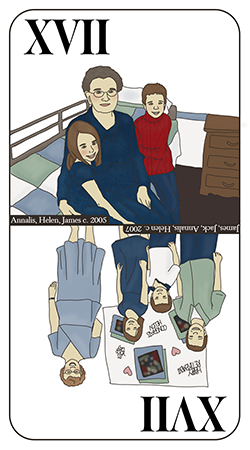

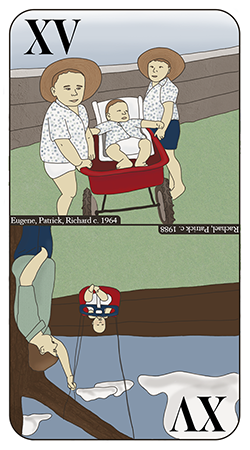
Povinnost may call any of these trump cards as a partner
Before the first trick, Povinnost calls a Partner Card.
Whichever player holds the partner card plays as Povinnost's partner against the other two players.
Games of Taroky always have 4 players.
Normally, Povinnost calls the XIX. If, however, Povinnost has the XIX in hand, Povinnost may instead call the XVIII.
If Povinnost has both the XIX and the XVIII, Povinnost may instead call the XVII.
This goes on until the XV. If Povinnost has every trump from XIX through XV, then Povinnost must call the XIX and play alone.
Back
Next
Playing Alone (12)
Any player who wishes to play alone may call Prever.
This typically only happens when a player has a very strong hand with lots of trump.
Prever must beat all other three players combined in order to win.
Back
Next
Deal and Draw (13)
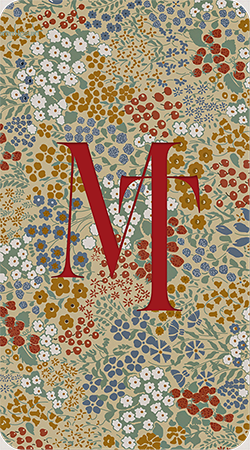





6 cards are dealt face down to form the Talon
To begin each round, one player deals 6 cards face down in the center of the table.
Then, each player is dealt a hand of twelve cards, usually in sets of six.
After the players receive their hands, Povinnost declares "Povinnost" to start the bid.
Each other player may bid "Pass" or "Prever" in turn.
If all players pass, then the game is played normally and Povinnost draws 4 cards from the Talon.
The player to Povinnost's right and the player across from Povinnost both draw 1 card from the Talon.
However, if any player bids Prever, then that player draws 3 cards from the Talon.
Prever may reject those cards and instead take the bottom 3 cards from the Talon.
Yet again, Prever may reject those cards and return to the first set of 3.
Back
Next
Discard (14)



Prever will discard 3 cards after drawing
After drawing, each player must discard down to 12 cards.
Players may not discard any trump cards or 5 point cards like Kings.
If a player has only trump cards and 5 point cards, that player may discard trump cards but never 5 point cards.
Whenever a player discards a trump card, that card must be shown to all other players as it is discarded.
Back
Next
Under Construction! (15)
It seems we haven't quite finished the tutorial!
Have any suggestions? Email them to webmaster@smach.us
Back
Go Back
The initial page is a list of rooms. Each room has 4 dots inside it. Hollow dots indicate Robot players, filled dots indicate Human players. To join a room, click on one which has an empty slot. The Custom room is used when, after a game, you copied the save code. You can paste the save code into the custom room in order to replay that game.
If you are given a room code, you can type it in to join that room
If you join a room which previously had no players, you become the room host. This means you can edit the various settings before starting the game.
Difficulty adjusts the bots play style
Timeout adjusts the amount of time each player is given before their turn is taken automatically (use 0 or -1 to disable it. It has a minimum of 20 seconds otherwise)
Lock Room can be used to prevent players from joining your game. Rooms cannot be unlocked.
Ace High adjusts whether the ace of red suits beats the two, three, and four
Save Settings allows you to save your preferences when you're signed in, so you won't have to set them again each time
Visibility determines whether other MachTarok users can see and join your room without an invitation. Players with join codes can always join.
Above your hand and the table, a few bits of text let you know what the current action is. First, the player number or account name of whoever's turn it is. Then, what action they are currently preforming. If the timeout is enabled, it will also show a count-down in seconds until the action is automatically completed
Below your hand is the round information, including who Povinnost is, who Prever is, what money cards have been called, who is signed in to accounts, and who Povinnost is playing with. This information is placed here for your convenience.
Once you join a room, you can leave the room by double-tapping on "Leave Room" You will then be sent to the Join Room screen
Whenever the game prompts you to either discard a card or play a card, many of your cards may turn gray. This is simply because you are not allowed to play or discard those cards. If it seems like all of your cards are gray, try hovering over the clubs and spades to see if you can play any of them. Once you make a choice, simply click (tap, on mobile) on your choice and that card will be played or discarded
BE SURE TO WAIT A SECOND before playing a card. The first card should come up fairly quickly. Cards which are "on the table" are animated in one every 5 seconds. This can lead to a laggy animation if players play faster than that. For example, the bots play instantly and so will cause your turn to arrive before the cards have loaded. In this case, just wait a few seconds for the cards to load in. This is why the minimum timeout is 20 seconds. Once all the cards appear, make your choice. Similarly, if you leave the room while cards are on the table, they should disappear within a few seconds. This is one of those things which is under constant improvement.
The accounts system is handled separately by Mach SSO. The login, sign up, and verification processes are all through sso.smach.us The Sign In link should work fluidly. It should automatically open in a new tab, and, when the login is complete, close that tab. Error messages are displayed on Mach Tarok, should an error occur. If Mach SSO is ever unavailable, but Mach Tarok is available, simply skip logging in, as Guest accounts work fine.
Also, every single standard set by OWASP is followed in the accounts' system, so, if your 12+ character password is secure, you can rest assured your Taroky account won't be stolen.
Go Back
Click or tap the sections below to open them.
Taroky originated in the Czech Republic as a Type III Tarot card game. It is important to note the distinction between Tarot card games and the occult Tarot cards. The original card games have historical roots as far back as 1456, whereas occult Tarot cards did not exist until the late eighteenth century. Taroky predates Tarot cards and is associated with it only in name and has nothing to do with the occult.
As a Type III Tarot Card game, Taroky consists of a 54 card deck which contains the 4 French suits (Spades, Clubs, Hearts, and Diamonds) along with 21 Trump cards (known as Taroks) and the Fool card, known as the Skyz, which is the highest trump/Tarok. Each of the four French suits consists of the Court (A King, Queen, Rider, and Jack) along with 4 standard cards (for the black suits, these are 7, 8, 9, and 10, whereas the red suits are ace, 2, 3, and 4). Each card has an associated point value which is standard across all Type II and Type III Tarot Card games.
The specific variant of Taroky this website uses is Neunzehnerrufen, also known as "Czech Taroky" While we do not yet support other variations of Taroky, we plan to in the future
5 Points: Kings, Skyz, XXI (Mond), and I (Pagat)
4 Points: Queens
3 Points: Riders
2 Points: Jacks / Kluks
1 Point: Everything else (other Trumps and colors)
Taroky is a turn-based point-trick game. The goal of Taroky is to earn as many chips as possible throughout a game. Each game contains several rounds, and usually lasts for an hour of playtime. Within each round, there are three main phases:
- The Setup Phase, where the cards are shuffled and dealt out, Povinnost determined, Prever and money cards are called, Valat, Contra, and Pagat on the End are determined
- The Play Phase, which consists of twelve consecutive tricks
- The Cleanup Phase, where points are counted and chips are paid
During each round, the goal is to earn chips through winning points during each trick. Chips can only be earned through money cards, penalty payouts, and winning the round. The game starts with a player shuffling the cards, the cut, and the deal
In an ordinary game, the deck usually goes to the most senior player at the table. In MachTarok, however, the deck instead defaults to the first player to join the room, called the room host Some players prefer to cut the deck and each choose a card, where the highest valued card decides the first player.
Regardless, the chosen player shuffles the deck and passes the deck clockwise to be cut. In most cases, the deck is then cut and passed back to the original player. However, when the cutting player feels that the deck has not been shuffled properly or, as is usually the case, is on a losing streak, the cutting player may decide from several various other choices. This is called "Knocking the deck" or simply a "knock", since the cutting player knocks on the deck and passes it back without cutting it. The cutting player may then choose from among these options:
- Deal by ones - normally chosen to incur a misdeal penalty, as it is the most difficult way to deal
- Deal by twos
- Deal by threes
- Deal by fours
- Deal by sixes - which is essentially just skipping the cut
- Deal by twelves straight
- Deal by 3, 4, 5
- Deal by twelves choice
No matter the choice, the dealer then takes the top six cards of the deck, in order, and places them in the center of the bord. This is known as the Talon, and will be important later. The dealer then moves counter-clockwise around the board, so that the dealer is the last player to receive cards, dealing either six or the chosen number of cards to each player. No matter the case, each player will end up with twelve cards in hand. In the case of twelves choice, the dealer places the remaining cards in piles of twelve and players choose which pile to receive in the same order they would have been dealt to, with the dealer receiving the last pile.
Once the cards are dealt, Povinnost (which means "Authority") is determined. Povinnost is the lead player of the round, and has several special characteristics which are important later. For the first round in each game, Povinnost is the player who was dealt the II. In the event the II was dealt to the Talon, the player with the III is instead Povinnost, on up until VIII, which is the highest possible. Each round after the first, Povinnost instead rotates counter-clockwise, such that Povinnost will be the dealer for the next round, then will cut the round after.
The first action made each game is declaring Povinnost and Prever. Povinnost will announce "Povinnost, can I go?", "Going 4", or simply "Povinnost" This essentially means "I would like to play with a partner", however Povinnost later may have the chance to play solo Each other player, in turn (counter-clockwise) then may either say "Go ahead" / "Pass" or "Prever" / "I'm going 3" / "I'm playing by myself" Prever, sometimes written prefer or preferanc, meaning "check" "choice" or "preference" is each player choosing to play alone against the other three players The rules after here diverge quite quickly
In the event that a player calls Prever, that player receives the top three cards of the Talon. Prever may then choose to reject these cards and take the bottom three cards from the Talon. Yet again, Prever may reject these cards and return to the top three cards. Two important things happen whenever Prever rejects a set of cards
First, the cards are shown to the other players
Second, the cost of losing for Prever doubles
Upon deciding, Prever then places the three chosen cards into the hand, and the other three cards are given to the opposing team's discard pile.
If, instead, no player wishes to play Prever, Povinnost receives the top four cards of the Talon. The remaining cards are given, counter-clockwise, to the second and third players Either of these players may, before seeing the card, offer it to the fourth player, who can either accept or reject it. If it is rejected again, the original player must draw it. After all the cards are drawn, players discard down to twelve cards
Each player, whether Prever, Povinnost, or other, must discard down to twelve cards before the game begins. The players may not ever discard any cards worth 5 points, including kings. The players may not discard trump cards unless only trump cards and 5 point cards remain. If a player must discard a trump card, that card is then revealed to all other players. A common tactic for discarding is known as "voiding" in a suit, which means discarding all cards of that suit so that a trump can be played later In MachTarok, this is done simply by clicking on a non-gray card during the discard action
After discarding, Povinnost leads the way in calling. If Prever is being played, Povinnost calls point cards first. Otherwise, Povinnost begins by announcing a partner card. Partner cards start at the XIX. If Povinnost has the XIX, either the XIX or the XVIII may be called. If Povinnost has both the XIX and the XVIII, instead the XVII may be called, down to the XV. If Povinnost has all the trumps XIX-XV, Povinnost must call the XIX. If Povinnost has the XIX, XVIII, and XVII, Povinnost may only call the XIX or XVII, not the XVIII. There is a maximum of two choices. When Povinnost calls a card which another player has, that player becomes Povinnost's partner, although that is not revealed yet. Otherwise, when Povinnost has the card which was called, Povinnost plays alone, although there are some important differences between this and playing Prever
After the partner card is determined, money cards (aka point cards) are called. There are eight different types of money cards:
| Name | Requirements | Payout |
|---|---|---|
| Uni / Barvy | No trumps | 4 chips |
| Bida / Barvičky | 1 or 2 trumps | 2 chips |
| Taročky / Little Ones | 8 or 9 trumps | 2 chips |
| Taroky / Big Ones | 10 or more trumps | 4 chips |
| Trul / Trull | Skyz, Mund, and Pagat | 2 chips |
| Pane / Honery | 4 of the Honours (Kings & Trul) | 2 chips |
| Rosane Pane / Rosa-Honery / Královské Honery | All 4 kings and none of the Trul | 4 chips |
| Rosane Pane+ / Rosa-Honery+ | All 4 kings and at least one of the Trul | 6 chips |
It is also important to note that most of these do not stack. For example, a player cannot call both Bida and Uni. However, Pane and Trul do stack, as well as Rosa-Pane+ and Trul, and Pane / Rosa-Pane / Rosa-Pane+ with Uni / Bida / Tarocky / Taroky. Trul stacks with everything (except uni, bida, and Rosa-Pane because that would be impossible)
Povinnost also has the choice to skip calling Bida or Uni, in order to prevent Fleking. Chips are paid, then a few additional things may be called
First off, Valat (literally "to roll") may be called. A player who calls Valat must win every single trick or otherwise pay 40 chips If, however, that player's team succeeds in winning every trick, they receive 40 chips
Next, Contra ("contrary" or "against") may be called. Who is allowed to call contra is a very complicated process, but here's the gist of it: During a prever game, Prever's opponents may call contra. If they do, Prever may call rhea-contra. If prever does, the opponent's may call supra-contra. Otherwise, Povinnost's opponents may call contra. If they do, Povinnost's team may call rhea-contra. If they do, Povinnost's opponent's may call supra-contra. During a Valat game, the players who are not on Valat's team may call, etc. Each time Contra is called, the payout doubles. This means if contra, rhea-contra, and supra-contra are all called, the payout is 2x2x2 = 8 times what it normally would be
Finally, if Valat was not called (or in some variants even if it was), the Pagat may be called on the End, known as I on the End. Only the player who has the Pagat may call this. What this means is that the Pagat must be held until the last trick, must be played on the last trick, and no other players can play trumps on the last trick, even Pagat's teammate If any of these conditions are not met, Pagat's team pays 4 chips (some rules say as many as 20) to the opposing team. If all the conditions are met, however, Pagat's team receives 4 chips
Finally, down to business. The game starts with Povinnost leading a card. This is true even for Prever games. Povinnost may lead any card, although if Povinnost has a strong hand or someone called Tarocky/Taroky, it is customary to lead a low trump and "look for the partner" Each other player, in counter-clockwise order, must then follow. If a color was lead and a player does not have that color, a trump must be played. If the player has neither that color not a trump, instead any card may be played. After all four cards are played, whoever played the highest card wins the trick. Cards are ranked in this order:
Trump, starting with the Skyz, then going down XXI, then XX, etc.
The lead color's court, starting with the King, then Queen, then Rider, then Jack
Finally, the lead color, in black being 10, then 9, then 8, then 7 or in red being 4, 3, 2, 1 (Some players play where the Ace is higher than the other three)
Any cards which are neither trump nor the lead color cannot win. The winner of the trick then collects the cards by placing them into that player's discard pile Then, the winner leads the next trick, and these same rules are followed until all twelve tricks have been played
After the twelfth trick is collected, each team counts their points based on the point values of each card
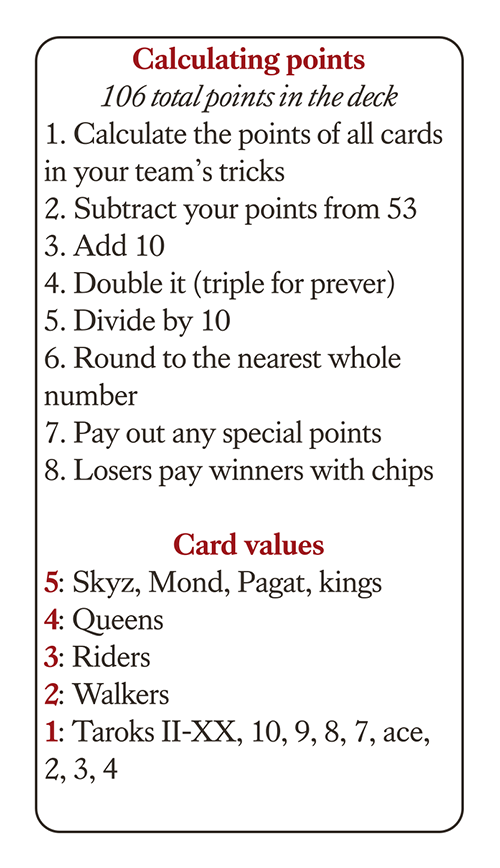
- There are a total of 106 points available, so a team must have 54 in order to win.
- If both teams have 53, then Prever's team loses. If there is no Prever, then Povinnost's team loses.
- If one team won all the tricks, then that team has Valat'd and earns 20 chips each. If it was called, then they earn 40 chips each instead
- The difference from 53 is taken (0 in the case of a tie)
- Ten points are added (10 in a tie)
- That total is doubled, or tripled in a game of Prever (20 or 30 in a tie)
- Then, that number is rounded to the nearest 10 (2 or 3 chips in a tie)
- If any number of contras were called, they are applied here, for a maximum of times 8
- Finally, if the Pagat (the I) was played on the last trick, bonuses are applied here.
- If another trump was played with it, Pagat's team loses 2 chips (if called, 4)
- Otherwise, Pagat's team earns 2 chips (if called, 4)
- The losing team then pays the owed chips to the winning team
- In the case of a 3v1, each of the 3 pay to the 1
- In the case of a 1v3, the 1 pays to each of the 3
Congratulations, you just finished reading all the rules to Taroky. Now get going and play a few games!